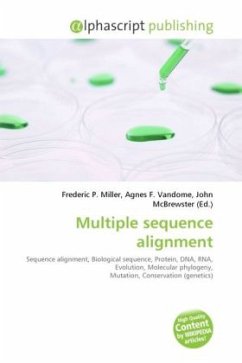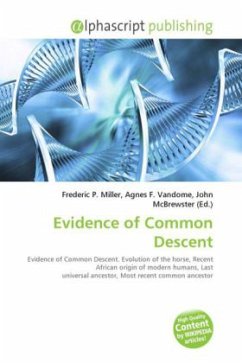
Error threshold (Evolution)
Versandkostenfrei!
Versandfertig in 6-10 Tagen
23,99 €
inkl. MwSt.

PAYBACK Punkte
12 °P sammeln!
The error threshold is a concept in the study of evolutionary biology and population genetics and is concerned with the origins of life, in particular of very early life, before the advent of DNA. The first self-replicating molecules were probably small ribozyme-like RNA molecules. These molecules consist of strings of base pairs or "digits", and their order is a code that directs how the molecule interacts with its environment. All replication is subject to mutation error. During the replication process, each digit has a certain probability of being replaced by some other digit, which changes...
The error threshold is a concept in the study of evolutionary biology and population genetics and is concerned with the origins of life, in particular of very early life, before the advent of DNA. The first self-replicating molecules were probably small ribozyme-like RNA molecules. These molecules consist of strings of base pairs or "digits", and their order is a code that directs how the molecule interacts with its environment. All replication is subject to mutation error. During the replication process, each digit has a certain probability of being replaced by some other digit, which changes the way the molecule interacts with its environment, and may increase or decrease its fitness, or ability to reproduce, in that environment. It was noted by Manfred Eigen in his 1971 paper that this mutation process places a limit on the number of digits a molecule may have. If a molecule exceeds this critical size, the effect of the mutations become overwhelming and a runaway mutation process will destroy the information in subsequent generations of the molecule.












